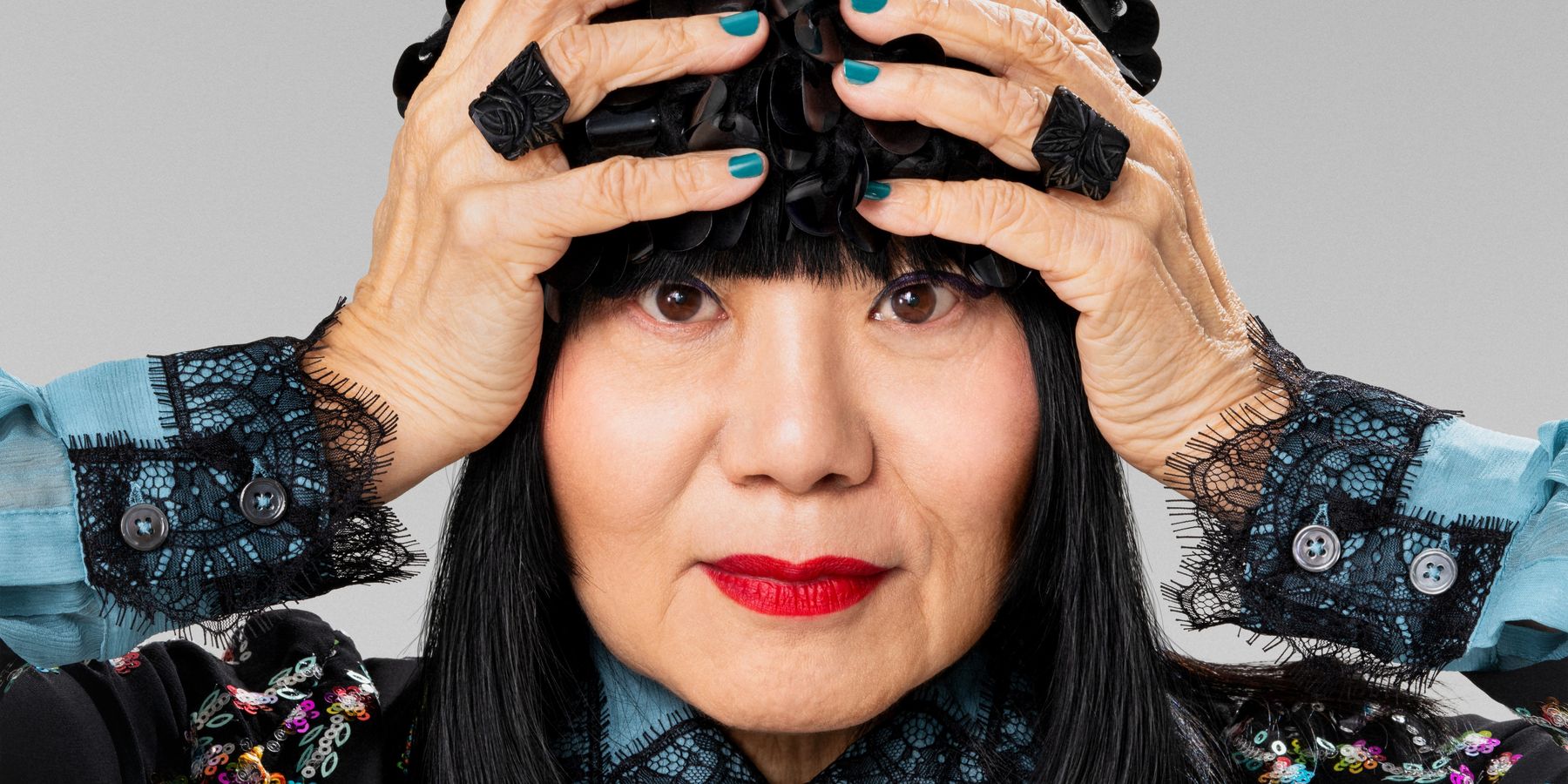
Anna Sui Has the Answers
Story by Andrew Nguyen / Photography by Ryan Duffin / Hair by Steven M. Fernandes / Makeup by Ayako

You’re only as good as the company you keep, and Anna Sui’s company is legendary. At her recent Fall 2024 runway show during NYFW, Marc Jacobs, Sofia Coppola, Debbie Harry and the New York Dolls’ David Johansen were all in attendance at the Strand’s Rare Book Room — not because their presence would get clout in the press, but to support their longtime friend.
Sui would never tell you that she is one of the greats. She still doesn't even think she’s made it. Of course, she has more than 30 years of culture-defining collections that speak for themselves. But as a 20-something queer Asian-American in fashion writing this, I’d like to add: among her peers, a laundry list of white male designers, Anna Sui is one of the only Asian-American women who’s made it.
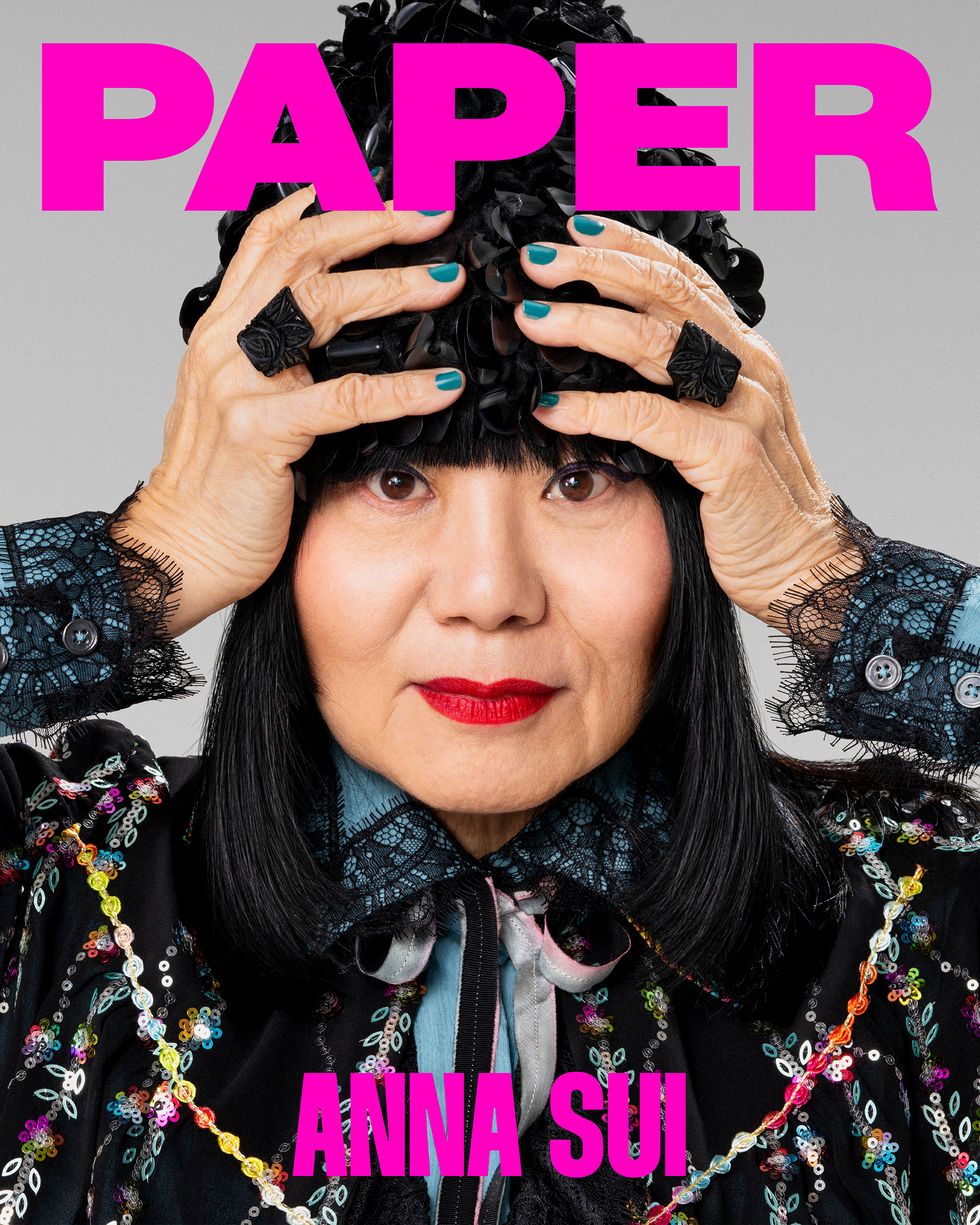
A spiritual friend once told me that every person is a different kind of light. Some people, for example, are lasers focused on a specific path. Anna Sui is a laser. “I’ve been singularly driven since I was five,” Sui says over a video call on one of the only recent snowy days in New York City. While I had cozily sheltered in my apartment, she was in the studio working on her next collection. “I knew I wanted to be a fashion designer.”
At that age, Sui visited NYC to be a flower girl at her aunt and uncle’s wedding. The minute she returned to the Detroit suburbs, she told her parents that she was going to be a fashion designer, officially speaking her intention out into the universe. As she spent her entire childhood and teenage years figuring out how to make her dream a reality, she found an ad in the back of her babysitter’s Seventeen magazine for Parsons School of Design. She took down the address, wrote to Parsons, got the registration catalog and geared her education so that she would have exactly the knowledge she needed to get in.
I found it hard to believe that her immigrant Chinese parents would ever support their daughter wanting to be a fashion designer. My own parents scoffed at the idea of going into any sort of creative field. “Why don’t you want to be a doctor or a lawyer? Why do you want to be a dressmaker?” Sui’s mom, who even did a lot of home sewing and knitting, asked her in classic Asian parent fashion. “It wasn't until the first fashion show that my parents realized that it was something more than just a dressmaker,” Sui says.
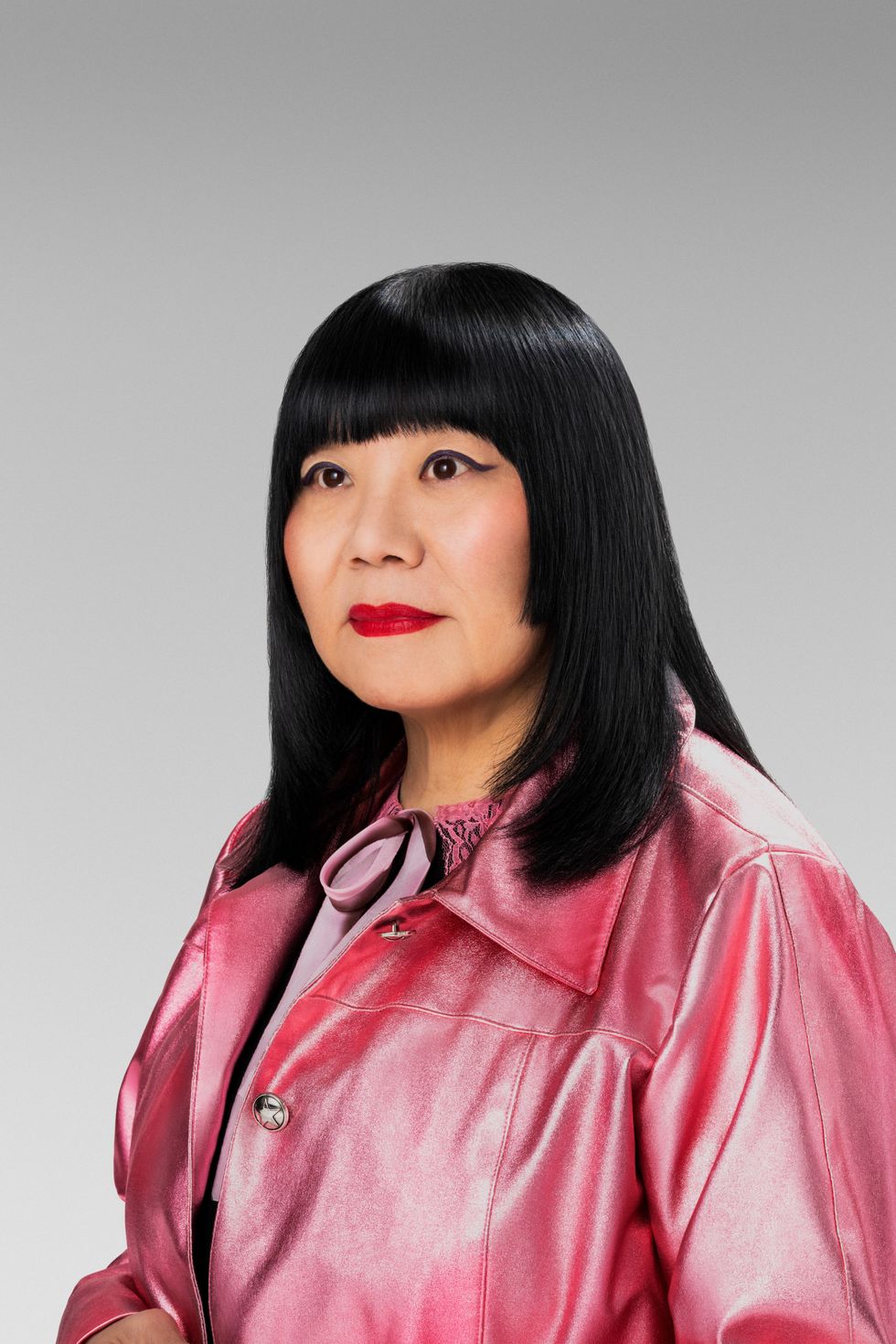
Clothing: Anna Sui
Sui’s first friend at Parsons was photographer Steven Meisel after he called her over in the lunchroom. Their squad would go over to her apartment and get dressed up before hitting gay clubs like Le Jardin, where Andy Warhol and his entourage, including the likes of Yves Saint Laurent and Valentino Garavani, would frequent. But by the time Studio 54 opened, sucking in and spitting out every glamorous person in the ’70s, an underage Sui was sneaking — as in, going early and hiding in the bathroom until it got more crowded — into shows every night at CBGB and Max’s Kansas City to see rock and punk bands like Blondie, the Talking Heads and the Ramones.
Eventually — because she ended up getting banned from Max’s — Sui’s night life shifted to the Mudd Club, where celebrities democratically mixed with people in the art and creative scene. “Everybody would get super dressed up even though nobody had any money back then,” Sui says. “It was all thrift shop clothes, but everybody looked like movie stars.” Responsibly, though, she’d leave early to make sure her homework was done.
Being a rock club regular soon focused Sui’s designer dreams: she found she wanted to dress rock stars and people who went to their concerts. By chance, some friends of hers were making punk-inspired jewelry to sell at trade shows and suggested they share a booth if she made some clothes. Macy’s and Bloomingdale’s ended up being the first buyers of her girly, hippie-punk dresses. “They were kind of competing for who was ahead, fashion-wise, and always looking for new stuff for their windows,” Sui says. But when one door opens, sometimes another one closes. She was fired from her job once her boss found out. “After that, I started my business.”
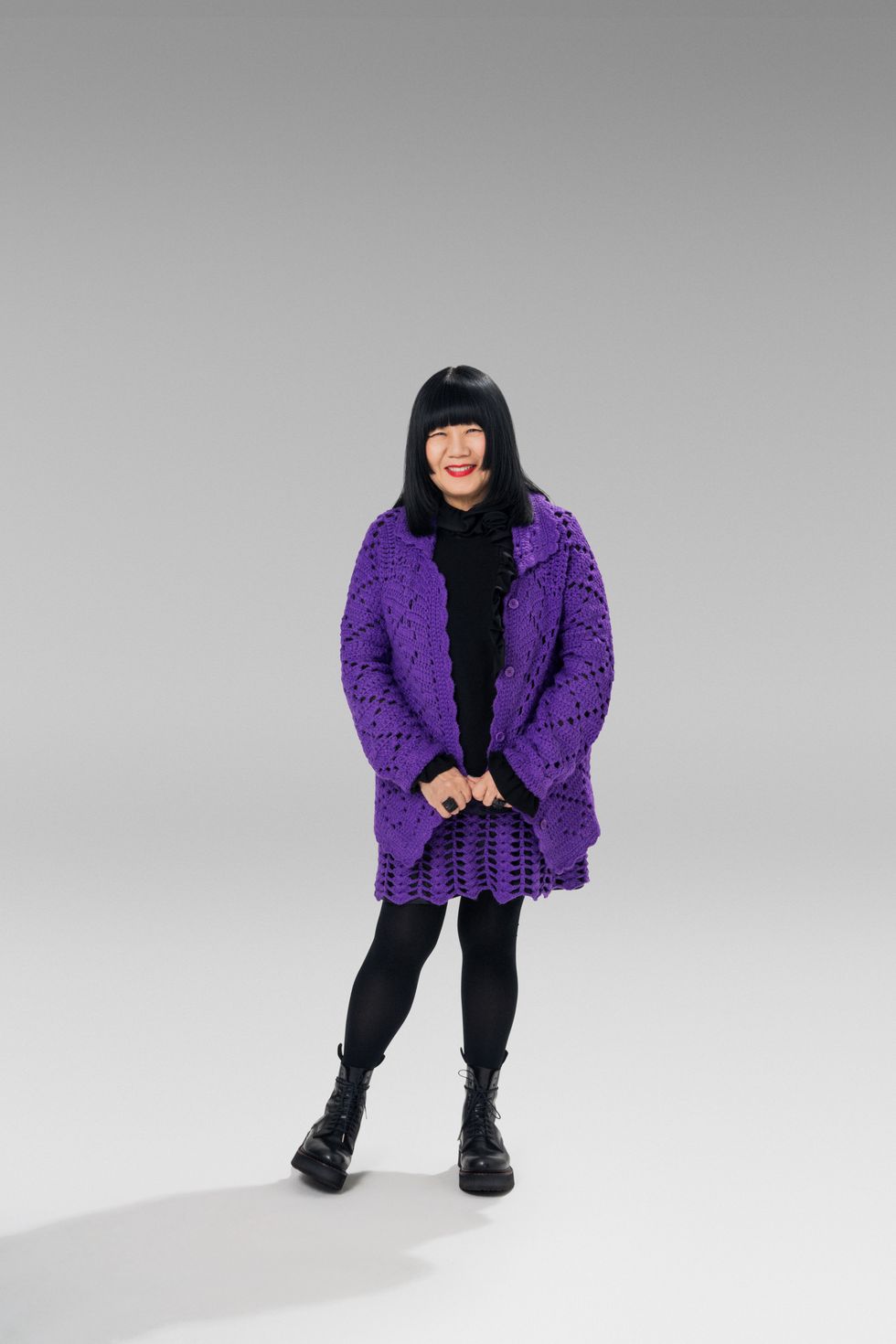
Clothing: Anna Sui
Sui simply wanted to design clothes her friends could turn out at the club, laying the foundation of the universe the world would one day recognize her for. Everything was girly and romantic, yet punk and grunge. A mishmash of bohemian florals, ruffly frocks and trippily layered fabrics. It was for the free spirits who came alive at night in a crowded dark room. Today, her commitment to the era sort of feels like a history lesson in culture, art and fashion.
During those earlier years, Sui financially supported her label by freelance styling editorials shot by Meisel for Vogue Italia editor Franca Sozzani. The side hustle let her to stay true to her own personal vision and the world she was building with her brand. “We were all kids back then just playing dress up,” she says. “I’d have a little audience that would critique what I was showing and we'd sit around talking about what the collection was going to be.”
I’m reminded of friend groups I know, including my own, in Brooklyn (which has basically become the modern-day downtown Manhattan of the ’70s and ’80s) that consist of stylists, editors, photographers, musicians, DJs and artists of all sorts that naturally come together through nightlife. They collaborate and create while having little to nothing in the hopes of achieving their dreams, too.
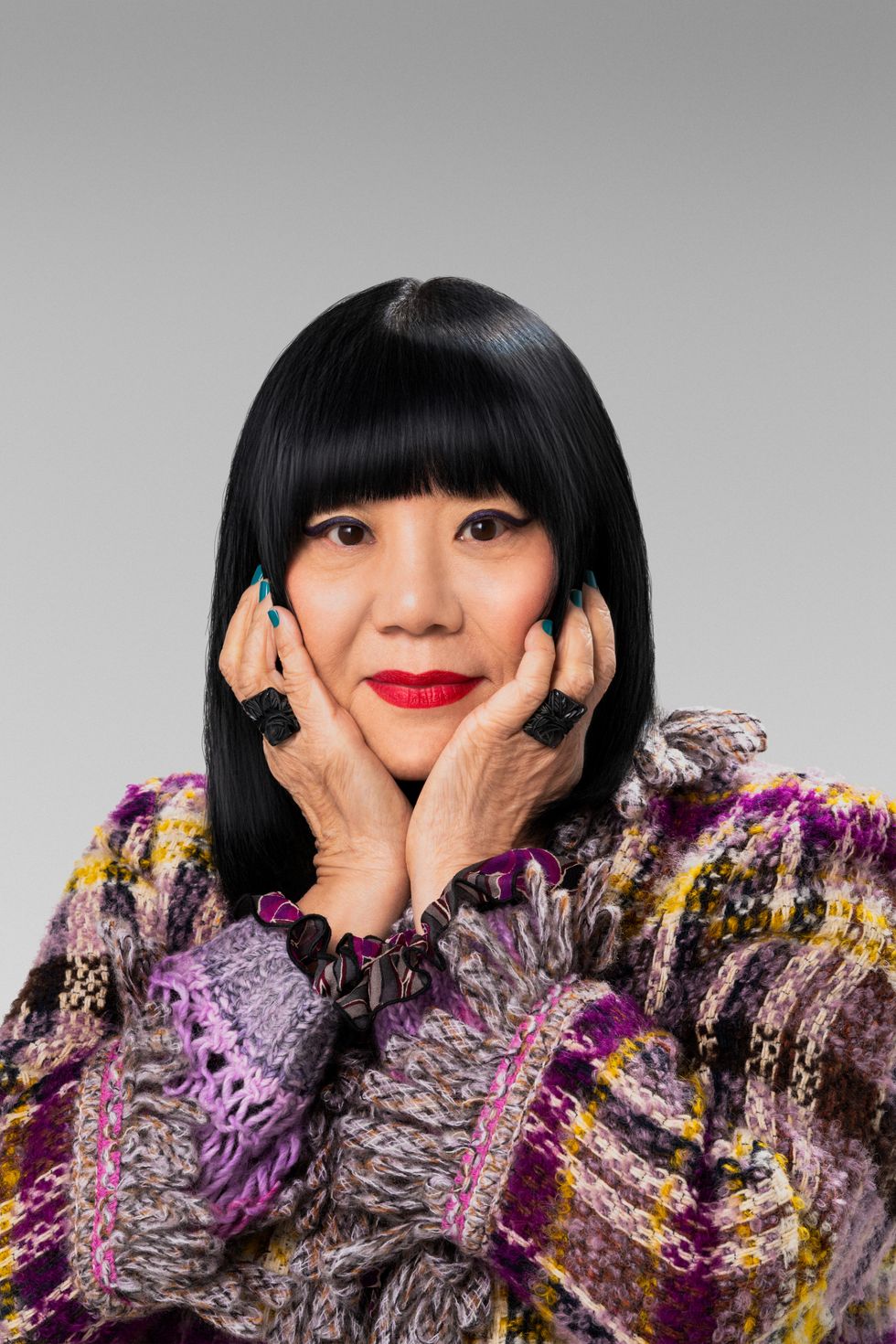
Clothing: Anna Sui
In that vein, Sui learned an important lesson early on: build a team from the people who see you and support you. Sui has worked with almost all the same people throughout her whole career, like makeup artists François Nars and Pat McGrath and accessories designers Erickson Beamon and James Coviello. “It became a whole family,” she says. “And same with my staff. A lot of people have been with me since the beginning.”
Outside of her little world, it was difficult to get the industry at large to get it. Sui didn’t really fit in; she wasn’t making clothes that were popular in the ’80s — tops with exaggerated shoulders, pants with an ultra high-waist and power suits — like Calvin Klein and Donna Karan were famous for. It wasn’t “designer fashion” or even “junior fashion,” she says. “The boutiques got it, but in more of a corporate structure, it was always tricky.”
Sui had her first runway show in 1991. And just a year later, to bring her world to life in a physical space, she opened her first store on Greene Street in SoHo after her friend Zack Carr, the then-creative director of Calvin Klein, claimed to have a psychic vision about it. Finally, department stores and magazines were understanding her point of view. The timing was kismet — perhaps in regards to her personal journey, but definitely as it concerns the shifts within the fashion industry as New York became a center for international fashion. “I had all the Japanese, Chinese and European press coming,” Sui says.” It was just the beginning of globalization and it made me a global brand right away. I was lucky to be there at that time.”
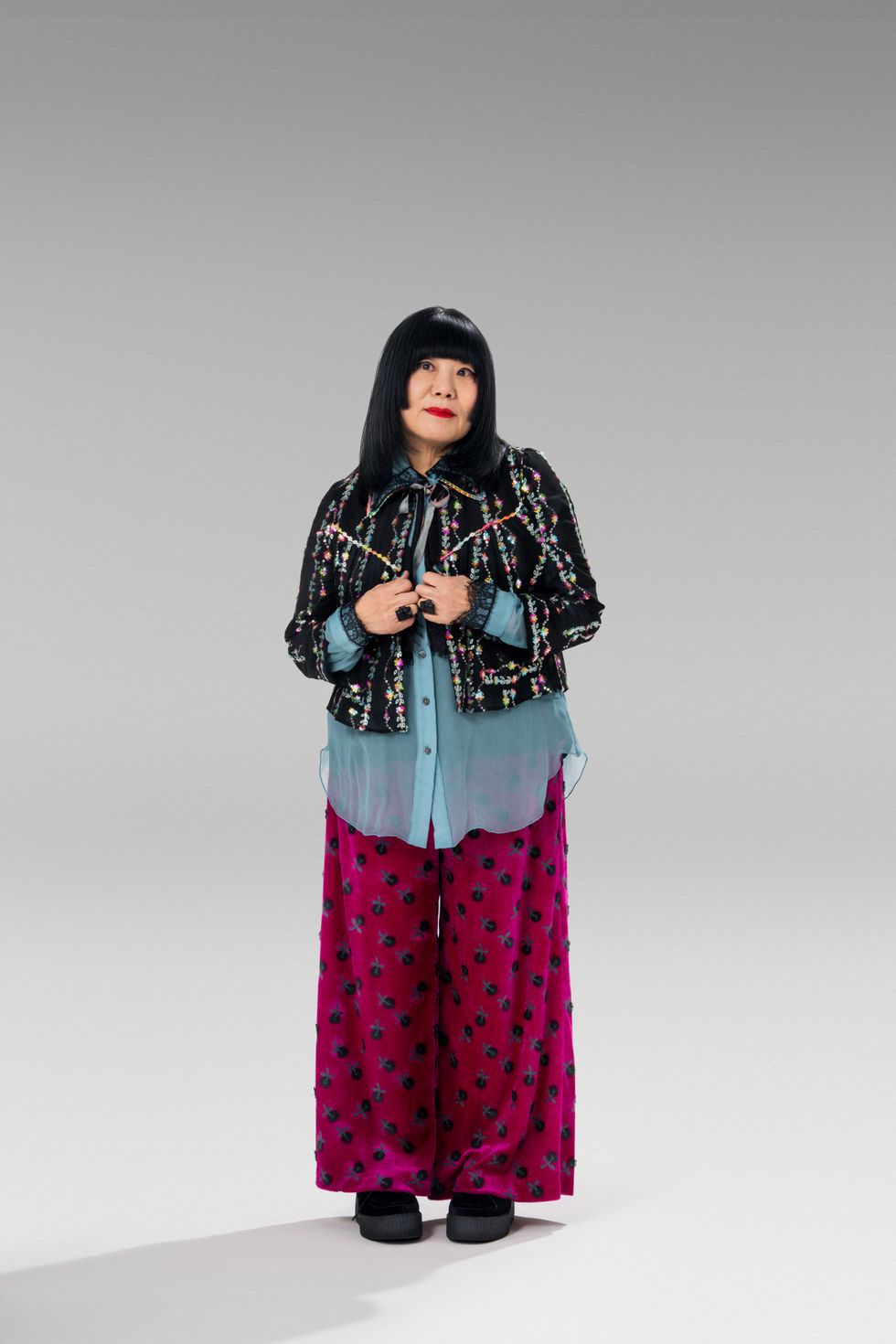
Clothing: Anna Sui
Japanese stores and editors were looking for an American designer to promote, and Anna fit the bill. She landed a contract with department store company Isetan, which distributed her collection and offered a licensing agreement for a cosmetics line. Around the same time, Sui also scored a fragrance license from a German beauty company Wella. “There was no master plan,” Sui says. “I just had to take opportunities as they came. You have to be able to step up to the challenges. That was key to being an independent business.”
Of course, it all changed after the global financial crisis of 2008, when brands became much more concerned about their bottom lines. Fewer labels were independently owned; corporations began taking over. Still, Sui adapted: “After that, I had to start analyzing and strategizing and balancing out the collections. Of course, I want my things to sell. But if you look at the body of work, I've stayed true to myself. Even my idea of minimalism and ‘quiet luxury’ is still very Anna Sui. I can't help it.”
For Sui, during earlier years, it seemed easier to get face time with industry decision-makers: fashion directors like Kalman Ruttenstein at Bloomingdale’s and magazine editors at Vogue and Harper’s Bazaar who stayed at their respective publications forever. “They were just so powerful back then,” Sui says. “They could really make or break you. It’s always existed, but now it's really in the extreme: corporate headquarters to answer to and a lot more politics involved as far as who the advertisers are. And there was a lot of support for fashion and young designers.”
Sui speaks with the wisdom and ability to compare two different time periods as it relates to her experience. I’d argue that the difficulty of breaking through in fashion now is comparable. The game is still the same, it’s just played differently. We have no choice but to adapt to the environment of our time. Speaking with Sui, I thought, What if she just isn’t giving herself enough credit for how hard she worked to make it all happen?
When asked about her upbringing, Sui says that it was a very typical ’60s suburban American experience. Hers was the only Chinese family in the neighborhood, but they “didn't really experience very much discrimination at that point. It wasn't like a traumatic kind of thing.”
Interestingly enough, I didn’t even ask about trauma or indicate that I wanted to get into the topic, but these days, the cultural conversation asks that from us. How has your trauma, and subsequently your identity, made you who you are now? It’s a helpful question; by answering it, countless people of color, and specifically Asian-Americans, have been able to realize their need to unlearn the lessons their immigrant parents and grandparents taught them about being overly humble in spaces and industries dominated by whiteness.
Maybe that makes it even more impressive though, that Sui didn’t have to make her identity as a second-generation Asian-American woman part of her success story in fashion. It was all built on a simple dream, a never-ending stream of inspiration and curiosity that’s allowed her to consistently pump out collections for more than 40 years.
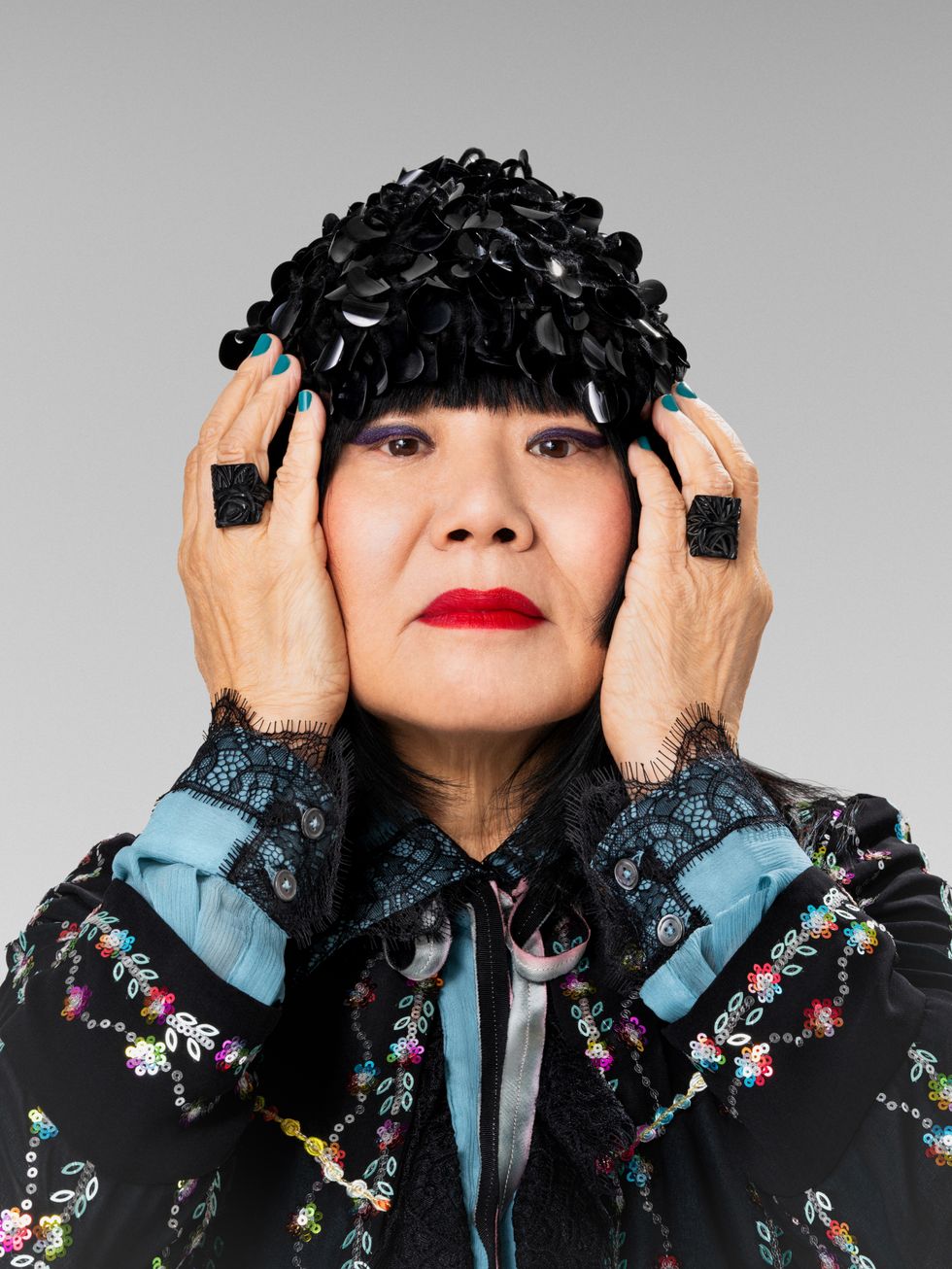
Clothing: Anna Sui
With the help of her staff and nieces and nephews that are in their 20s, Sui still follows all the trends. But, of course, it still comes out in Anna Sui style. Recently, she collaborated with the online retailer SSENSE on a capsule revisiting her Spring 1993 and 2001 collections. And when her friend Marc Jacobs revived his Spring 1993 grunge collection for Perry Ellis, he asked her to bring back 10 of her grunge looks to sell in his store.
Seeing the interest in all her work from the ’90s and early 2000s is amazing to Sui, and she can relate to the nostalgia. “I’ve been fascinated with the ’60s and ’70s since my younger years,” Sui says. “That's natural. There was a period when I loved the ’20s and ’40s. I'm glad that people are inspired by the past because there's so much to learn from that.” Her Fall 2024 collection was inspired by Agatha Christie novels, Virginia Woolf book covers, ceramicist Clarice Cliff — all women making work in the ’20s and ’30s — and ’30s London nightclubs.
Why not create a diffusion line of merch that’s geared toward Gen Z? While surely a potential cash cow, it just isn’t part of her ethos: Sui deeply believes in the traditional process of clothes-making under her control, especially as a designer who spent most of her earlier years apprenticing. Even her fascination with vintage clothes has mostly to do with the workmanship and the handicraft involved.
“Nowadays, young people are expecting just to hit it right in the beginning, but you really need to learn your craft,” she says. “You need to learn your resources, how to work with them and how to work with people. There's so many components that make up a collection: your sewers, your pattern makers, your fabric manufacturers. You have to develop relationships with everybody, and those are the things that really take time to learn.”
Sui loves clothes, fashion, shopping, styling — she loves it all. Even during COVID, when nobody else could come to the office, she still did. She’d look at fabrics or think about a collection. “I can't help myself,” she admits. “It's just how I'm wired. Even when it was difficult to do a collection, I still came up with ways to create something, even if it's something small like repurposing.”
After every runway show, she and her team would box up the collection and put it in the closet. It wasn’t until The World of Anna Sui exhibit at the Fashion and Textile Museum in London that she looked back at her collections and realized she designed in archetypes: the rocker, the schoolgirl, the punk, the goth, the bohemian. “It gave me a reality check,” she admits.
When asked if Sui feels like she achieved her dream or if she’ll ever stop, the designer very earnestly asks back: “How do you even know that you've achieved your dream?” In 2009, Sui received the CFDA Lifetime Achievement Award, but she still never feels like she’s “made it.” There’s always another collection in her, motivated by the excitement of presenting it in a new, different way. It could spring forth from a beautiful piece of fabric, or from watching a movie or reading a book that inspires her. She smiles: “I'm doing what I love and what I dreamed of doing. I couldn't ask for more.”
Photography: Ryan Duffin
Hair: Steven M. Fernandes
Makeup: Ayako
Photo assistant: Ben Jastremski
Retouching: Zach Vitale
Editor-in-chief: Justin Moran
Managing editor: Matt Wille
Fashion editor: Andrew Nguyen
Editorial producer: Angelina Cantú
Cover type: Jewel Baek
Story: Andrew Nguyen
Publisher: Brian Calle